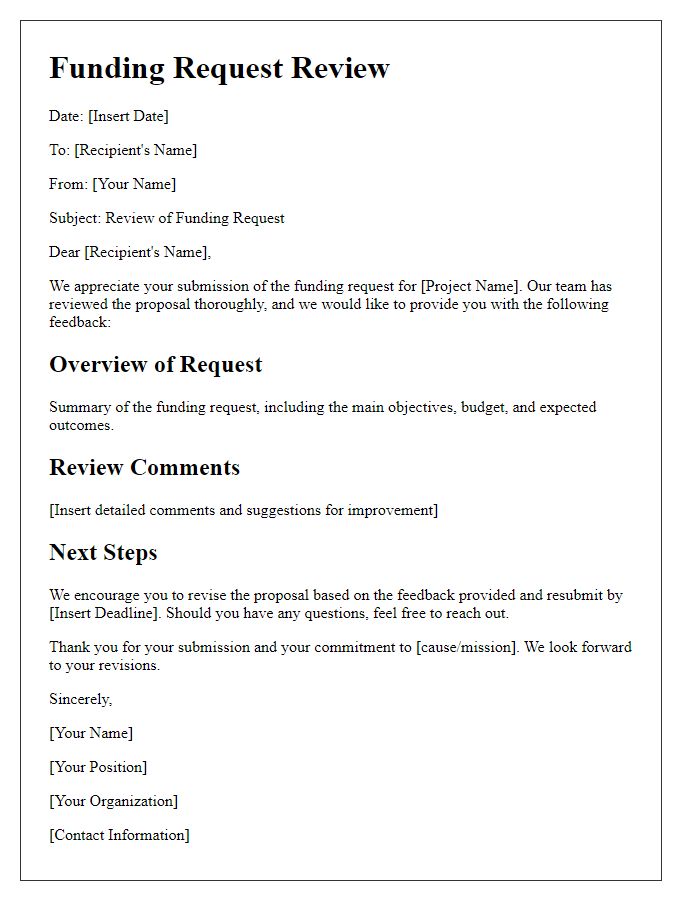Are you looking to craft a compelling financial proposal analysis? Writing an effective letter can significantly enhance your chances of gaining support and approval. In this article, we'll explore key elements that should be included in your financial proposal letter, from highlighting essential figures to clearly articulating your project's impact. So, let's dive in and discover how to create a powerful financial proposal that resonates with your audience!

Executive Summary
The financial proposal analysis provides a comprehensive overview of the budgetary requirements and projected financial outcomes for the upcoming fiscal year. The analysis outlines critical aspects such as projected revenue streams, cost estimates, profit margins, and return on investment (ROI) metrics. A total budget of $500,000 is proposed, with anticipated revenue of $750,000, reflecting a profit margin of 33%. The methodology includes a breakdown of operational costs, marketing expenditures, and contingency funds to safeguard against unforeseen financial challenges. Impacts of market trends, economic fluctuations, and competitive landscape assessments are also evaluated to ensure alignment with strategic objectives. This executive summary serves as a foundation for informed decision-making, aimed at enhancing financial performance and achieving sustainability.
Financial Breakdown
A financial breakdown provides detailed insights into the costs associated with a project or proposal, aiding in informed decision-making. This analysis typically includes categories such as direct costs, indirect costs, fixed costs, and variable costs. Direct costs encompass expenses directly tied to project execution, like salaries for project staff and materials needed for implementation. Indirect costs cover administrative expenses, utilities, and overhead necessary to support operations. Fixed costs remain constant regardless of output, such as rent for office space in Manhattan, New York, while variable costs fluctuate with the level of production, exemplified by software licensing fees based on user count. Furthermore, the analysis may highlight expected revenue streams, return on investment (ROI), and break-even points crucial for assessing project viability within competitive markets.
Market Analysis
In-depth market analysis reveals significant trends shaping the financial landscape, particularly in sectors like technology and renewable energy. The global technology market, valued at approximately $5 trillion in 2023, is projected to grow at a compound annual growth rate (CAGR) of 8% through 2027. In contrast, the renewable energy market, which hit $1.5 trillion in 2022, is expected to surge as governments transition towards sustainability; solar and wind energy sectors alone anticipate a combined growth of 15% annually. Geographic hotspots such as Silicon Valley (United States) and Shenzhen (China) emerge as key innovation hubs, attracting billions in investment. Furthermore, consumer preferences are shifting dramatically, with 75% of consumers expressing a willingness to pay more for eco-friendly products. Analyzing these data points provides a nuanced understanding of market dynamics, essential for strategic financial proposals in today's rapidly evolving economic environment.
Risk Assessment
Financial proposal analysis requires a comprehensive risk assessment to identify potential challenges. Common risks include market volatility affecting asset values, regulatory changes impacting operational costs, and credit risks related to debtor default. For example, a proposed investment in renewable energy infrastructure may face risks associated with fluctuating energy prices, such as the Brent crude oil benchmark which saw price variations of over 50% in recent years. Additionally, unforeseen events like global pandemics or geopolitical tensions can significantly impact supply chains, leading to delays and increased expenses. Effective risk management strategies, including diversification and hedging, are necessary for mitigating these risks and ensuring the financial viability of proposed investments.
Strategic Recommendations
A thorough financial proposal analysis reveals the need for strategic recommendations aimed at improving fiscal performance and sustainability. Key performance indicators (KPIs), including return on investment (ROI) and profit margins, must be analyzed in the context of industry benchmarks, such as technology sectors averaging 20% ROI. Moreover, market trends in 2023 indicate a shift towards digital transformation, necessitating investments in artificial intelligence (AI) tools that can enhance operational efficiency by up to 30%. Evaluating competitive landscapes, especially companies like Amazon and Google, underscores the importance of innovation and customer-centric strategies. By diversifying revenue streams, possibly through subscription models projected to yield significant recurring revenues, organizations can stabilize cash flow. Implementing cost-containment measures, such as supply chain optimization, may also yield savings of 15-20% annually. These recommendations align with long-term growth objectives and enhance overall financial health in rapidly changing economic environments.













Comments